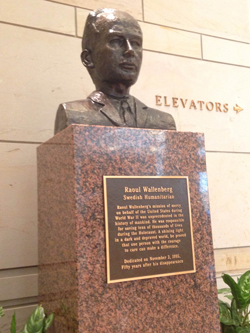
Story by Donald H. Harrison; photos by Shor Masori

WASHINGTON, D.C.– Grandson Shor and I visited the nation’s capital so that he, among other activities, could be exposed to the venues that house the three branches of government We took public tours of the Supreme Court, the White House, and the U.S. Capitol.
Rating the three experiences was not at all difficult. Congress provided the most extensive, interactive tour. Second most interesting was the Supreme Court. The White House experience was the least interesting.
Let me explain.
At the Capitol visitors center, we were formed into groups, given headsets, and were provided with a running narration by our guide, who explained about the architecture of the Capitol building and commented on the statues that can be found throughout the building.
Each state gets to send two statues at its own expense to the Capitol, and those from my home state are Father Junipero Serra, founder of the California Mission chain, and Ronald Reagan, the 40th U.S. President who had served previously as a governor of California. Currently in the state there is debate over whether the Serra statue should be replaced by one of astronaut Sally Ride. If that should occur, the Serra statue would be returned to California for suitable display elsewhere.
One of the more interesting points of the tour was when we came to a spot in the Old Senate chambers, which was replaced by much larger chambers as the United States continued to add states to the union. Marked with a gold dot is the place where the desk of John Quincy Adams stood. JQA, after serving as the nation’s sixth president, returned to the House of Representatives where he served ably. Our guide said that Adams could hear whispered conversations all across the room, and to prove it, she walked many paces, removed her microphone and spoke in a normal voice. All of us
were amazed that we could hear her as easily as if she stood next to us. It was an unplanned acoustical anamoly that gave Adams the advantage of knowing what other members were thinking.
The tour to the Capitol was introduced with a short video presentation on the theme of e
pluribus unum–from the many, one — that got us into a receptive mood to learn more
about Congress and the art of compromise.
In the case of the Supreme Court, we filed into the public gallery of the courtroom and listened with fascination as a guide told us about the seating arrangements– those for the opposing attorneys, for the law clerks, for the press, and for the justices themselves.
We found out that the chief justice sits in the middle of the nine seats reserved for the justices. The justice with the most seniority sits at the chief’s right; the one with the second-most seniority at his left; the third-most seniority, two seats from his right; the fourth-most seniority two seats to his left, and so forth. The newest justice sits four seats from the Chief Justice’s left in the so-called “rookie seat.” If a vacancy occurs on the court, every justice with less seniority than the one who departed will move up a seat.
The guide spent a lot of time telling us about the marble columns in the Supreme Court chambers, including where each column of marble had been quarried. He did this, he explained, so we wouldn’t take the columns “for granite.”

The White House tour requires people to line up outside, then go through several security checks before being allowed to participate in a self-guided tour through the public rooms of the White House, such as the Blue Room, the Red Room, the Green Room, the State Dining Room, the East Room, etcetera. Shor noted that the time consumed by security checks was four times as long as the actual tour itself. On a positive note, a bold squirrel, whom Shor and some visitors from Arizona dubbed as “Chester, the Security Squirrel” kept us amused as the line inched toward the White House.
Once inside, visitors walk on pathways designated by cordons, and while one can read a little bit
about each place, the security guards who keep watch on visitors have little to say.
So information about each room essentially is minimal, far less than you might read online.
Of course, it is a privilege to go through the White House and to be able to visualize the rooms that so often appear in news accounts of the doings of the President of the United States. Nevertheless, for tourists, it is a far less informative experience than those at the other two branches of government.
We took these tours with the idea of exposing the venues of the United States government to Shor, who will be going into the ninth grade this fall. But I was glad to say that at each branch of government–even on these fast tours — I was able to spot something that helped demonstrate San Diego Jewish World’s motto that “there is a Jewish story everywhere.”
In the White House, in a vestibule leading to the public rooms, were photographs of important moments in White House history, including the peace treaty signing ceremony that brought together President Jimmy Carter of the United States, President Anwar Sadat of Egypt, and Prime Minister Menachem Begin of Israel.

Among the statues and busts on display in the Capitol and its visitors center was one of Raoul Wallenberg, the Swedish diplomat who saved thousands of Hungarian Jews from deportation to the Nazi concentration camps by putting them under the protection of the Swedish government. Wallenberg disappeared after the war, and was believed to have died while a prisoner of the government of the Soviet Union.

At the Supreme Court four Jews were mentioned during the guide’s talk. They were three of the Supreme Court justices — Ruth Bader Ginsburg, Stephen Breyer, and Elana Kagan.
The fourth Jew? Moses, whose image is one of those painted on panels below the ceiling along with such other historic lawgivers such as Hammurabi and Napoleon.
*
Shor and I would like to thank our cousins Marc and Cynthia Yaffe for kindly hosting us during our visit to the nation’s capital. We also thank Congresswoman Susan Davis and her staff for reserving spots on the tours for us.
*
Harrison is editor of San Diego Jewish World. You may comment to him at donald.harrison@sdjewishworld.com, or post your comment on this website provided that
the comment is civil and your identify yourself by full name and your city and state of residence.